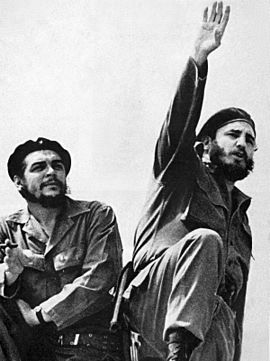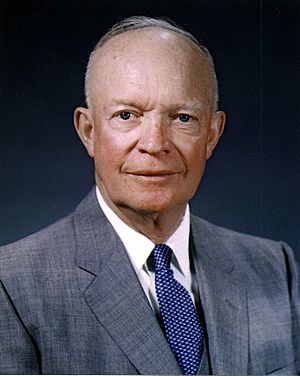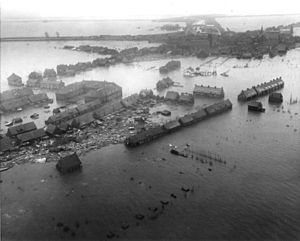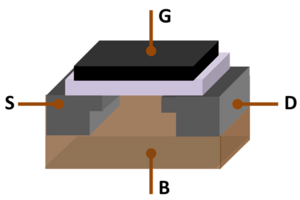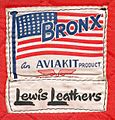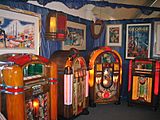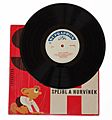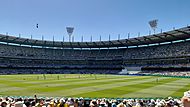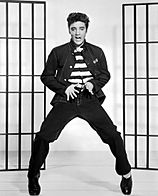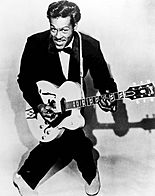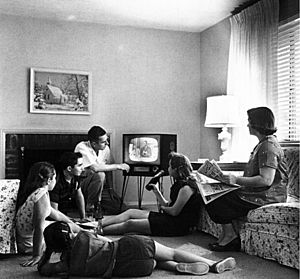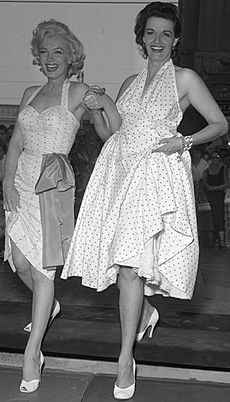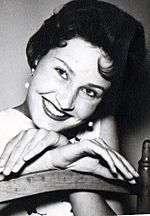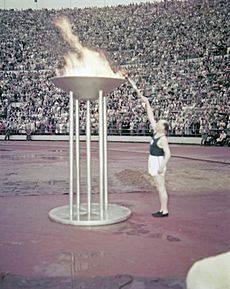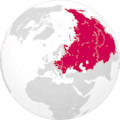1950s facts for kids
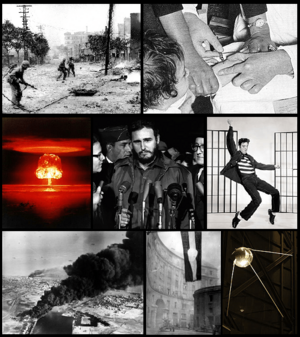
Centre, L-R: The US tests its first thermonuclear bomb in 1952. Another test from 1954 is shown; In 1959, Fidel Castro leads the Cuban Revolution, creating the first communist government in the Western Hemisphere; Elvis Presley becomes famous for rock and roll music.
Bottom, L-R: Smoke from oil tanks in Port Said during the Suez Crisis in 1956; The Hungarian Revolution of 1956; The Soviet Union launches Sputnik 1, the first satellite in space, in 1957. This started the Space Race.
| Millennium: | 2nd millennium |
| Centuries: | 19th century – 20th century – 21st century |
| Decades: | 1920s 1930s 1940s – 1950s – 1960s 1970s 1980s |
| Years: | 1950 1951 1952 1953 1954 1955 1956 1957 1958 1959 |
| Categories: | Births – Deaths – Architecture Establishments – Disestablishments |
The 1950s (pronounced nineteen-fifties), often called the "Fifties" or the "'50s", was a ten-year period from January 1, 1950, to December 31, 1959.
During this decade, the world continued to heal after World War II. Many countries saw strong economic growth and a big increase in births, leading to the "baby boomer" generation. However, the Cold War also grew much stronger. This was a tense competition between the Soviet Union (a communist country) and the United States (a capitalist country). This rivalry shaped many events, especially in the Northern Hemisphere.
Major conflicts included the Korean War and the start of the Vietnam War. The Space Race also began when the Soviet Union launched Sputnik 1 in 1957. Countries tested many nuclear weapons, which made the world feel very tense. In the United States, there was a strong fear of communism, known as the Second Red Scare. Many countries in Africa and Asia also started to gain their independence from European rule during this time. The world's population grew from 2.5 billion to 3 billion people in the 1950s.
Global Conflicts and Political Changes
Major Wars and Conflicts
- Cold War Conflicts: This was a period of tension between the Soviet Union and the United States.
- Korean War (1950–1953): This war started as a civil war between North Korea and South Korea. Soon, Western countries led by the United Nations Command (including the US) fought against communist powers like China and the Soviet Union. The war was very bloody and ended in a stalemate in 1953. Many soldiers and civilians died or were wounded.
- Vietnam War (began 1955): This conflict started in 1955. It involved fighting between North and South Vietnam, with outside powers supporting each side.
- Suez Crisis (1956): This war happened in Egypt after Egypt took control of the Suez Canal. The United Kingdom, France, and Israel invaded Egypt. They won militarily, but the United States and Soviet Union told them to leave. This event showed that European countries were losing their global power.
- Algerian War (1954–1962): This was a fight for decolonization as Algeria sought independence from France. It involved guerrilla warfare and terrorism, and eventually led to Algeria's freedom.
Internal Conflicts and Revolutions
- Cuban Revolution (1953–1959): Fidel Castro and Che Guevara led a revolution that overthrew the government of Fulgencio Batista. This created the first communist government in the Western Hemisphere.
- Mau Mau rebellion: In Kenya, the Mau Mau group fought against the British. This led to a British military victory and the rise of Jomo Kenyatta as a nationalist leader.
- Hungarian Revolution of 1956: People in Hungary rose up against their Soviet-backed government. Students and workers fought the Soviet Army. A new government took power, but the Soviets sent in more troops and crushed the revolution. Thousands died, and many fled the country.
- 1951 Nepalese revolution: This revolution overthrew the old ruling family in Nepal and brought democracy to the country.
Major Political Changes
- Decolonization: Many countries in Africa and Asia gained independence from European empires. For example, Libya became independent in 1951. Sudan, Morocco, and Tunisia gained independence in 1956. Ghana was the first country in sub-Saharan Africa to become independent in 1957.
- European Economic Community: The first steps towards what is now the European Union were taken in 1957 with the Treaty of Rome. This created a "Common Market" for European countries.
- Attempted assassination of Harry S. Truman: On November 1, 1950, two Puerto Rican nationalists tried to assassinate US President Harry S. Truman at Blair House. A White House policeman was killed, and one of the attackers also died.
- Apartheid in South Africa: In 1950, South Africa passed the Group Areas Act. This law was a major part of racial segregation and discrimination known as Apartheid, which lasted until 1991.
- Non-Aligned Movement: In 1955, the Bandung Conference created this movement. It was for countries that did not want to officially side with either the US or the Soviet Union during the Cold War.
Changes in Asia
- Japan became fully independent after the US occupation ended. It held democratic elections and its economy recovered.
- China, under the People's Republic, took control of Tibet and joined the Korean War. This led to bad relations with the United States.
- France fought a communist uprising in Indochina led by Ho Chi Minh. After a major defeat in 1954, France gave independence to Cambodia, Laos, and Vietnam. Vietnam was divided into North and South, which later led to more conflict.
Changes in Africa
- African nations began to receive economic help, but corruption and ongoing problems like war and disease remained.
- In Egypt, Gamal Abdel Nasser overthrew the monarchy and became president. He became an important leader in the Middle East, leading Arab states against Israel and promoting Arab unity.
- In 1957, Kwame Nkrumah led Ghana to independence from the British Empire.
Changes in the Americas
- Greenland became a part of Denmark in 1953.
- In 1954, the CIA helped overthrow the government of Guatemala.
- The Montgomery Bus Boycott happened in 1956 in Alabama, USA. This protest against racial segregation on buses was started by Rosa Parks. It was a key event in the Civil Rights Movement and led to the Supreme Court ruling that segregated buses were illegal.
- In 1959, Alaska and Hawaii became the 49th and 50th states of the United States.
- In 1959, Fidel Castro took power in Cuba, creating a communist government. He later became allies with the Soviet Union.
- The NORAD was formed in 1959 by Canada and the United States to create a shared air defense system.
Changes in Europe
- Europe rebuilt after World War II with help from the Marshall Plan. Western Europe adopted free market economies, while Eastern Europe was under Soviet influence. The division was known as the "Iron Curtain".
- Germany remained divided into West Germany (capitalist) and East Germany (socialist).
- In 1953, Joseph Stalin, the leader of the Soviet Union, died. Nikita Khrushchev took over and tried to make the Soviet Union more open. However, there were uprisings against Soviet rule in East Germany and Hungary.
Disasters
Natural Disasters
- 1950 Assam–Tibet earthquake: An earthquake in Asia killed between 1,500 and 3,300 people.
- 1951 Mount Lamington eruption: A volcano in Papua New Guinea erupted, killing 3,000 people.
- North Sea flood of 1953: A major flood in the Netherlands and the United Kingdom killed over 2,000 people.
- 1954 Chlef earthquake: An earthquake in Algeria destroyed a town and killed over 1,200 people.
- Hurricane Hazel (1954): This hurricane killed 1,000 people in Haiti.
- Hurricane Audrey (1957): This hurricane hit Louisiana, US, killing 400 people.
- Typhoon Vera (1959): A typhoon hit Japan, killing over 5,000 people and leaving many homeless.
- Malpasset Dam collapse (1959): A dam in France collapsed, causing a flood that killed 412 people.
Other Disasters
- 1952 Great Smog of London: A severe smog event in London caused major health problems and was linked to the deaths of up to 4,000 people.
- 1956 Grand Canyon mid-air collision: Two airplanes collided over the Grand Canyon, killing all 128 people on board.
- 1956 Andrea Doria sinking: The Italian ocean liner Andrea Doria collided with another ship off the US coast. 51 people died, and the Andrea Doria sank.
- 1958 Munich air disaster: A plane carrying the Manchester United soccer team crashed in Germany, killing 23 people, including 8 players.
Science and Technology Breakthroughs
New Technologies
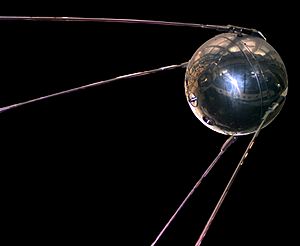
- Transistors: The transistor was greatly improved in the 1950s. By 1954, small portable radios became very popular.
- MOSFET: A huge step in semiconductor technology came in 1959 with the invention of the MOSFET (MOS transistor). This invention changed the electronics industry and is now the most common device ever made.
- Television: TV became very popular in the 1950s. By the end of the decade, most American homes had a TV. Television changed how people saw themselves and the world.
- Solar Battery: In 1954, Bell Labs created the first solar battery.
- Polio Vaccine: In 1955, Jonas Salk developed a polio vaccine, which helped protect millions of children from the disease.
- Space Race Begins: In 1957, the Soviet Union surprised the world by launching Sputnik 1, the first artificial satellite, into orbit. This started the Space Race between the Soviet Union and the United States.
- Hydrogen Bomb: The United States conducted its first hydrogen bomb test.
- Passenger Jets: The first passenger jets began flying.
Scientific Discoveries
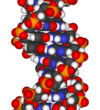
- DNA Structure: Francis Crick and James Watson discovered the double-helix (spiral ladder) structure of DNA. Rosalind Franklin also contributed important work to this discovery.
- Polio Immunization: A vaccine was created to prevent polio.
- Medical Ultrasound: The first successful ultrasound test of heart activity was performed.
- CERN: The European Organization for Nuclear Research (CERN) was established.
- First Nuclear Power Plant: The world's first nuclear power plant opened in the Soviet Union.
- NASA: The National Aeronautics and Space Administration (NASA) was created in the United States.
- HeLa Cells: In 1951, the first human cervical cancer cells were grown outside a body. These cells, called HeLa cells, became very important for medical research.
- First Transistor Computer: The first computer using transistors was built in 1953.
Popular Culture and Trends
The 1950s brought many new trends, especially in music, TV, and fashion.
-
In the 1950s, Pez candies were released and became popular.
-
The jukebox was very popular in the 1950s, found in diners and restaurants.
-
Vinyl records were popular for listening to music.
-
The 1950s saw the birth of rock and roll music, led by artists like Chuck Berry.
-
Two Summer Olympic Games were held: Helsinki in 1952 and Melbourne in 1956.
Music Trends
- Early 1950s Pop: At the start of the decade, popular music continued the "crooner" style from the 1940s. Singers like Frank Sinatra, Patti Page, and Perry Como were very popular.
- Rise of Rock and Roll: The middle of the decade saw a huge change with the rise of rock and roll. Artists like Elvis Presley, Chuck Berry, Fats Domino, and Little Richard became huge stars.
- Elvis Presley became the leading figure of rock and roll with his TV appearances and hit songs.
- Chuck Berry helped define rock and roll with songs about teen life and amazing guitar solos.
- Doo-wop: This style of music, often sung by vocal groups, also became popular.
- Teen Market: Rock and roll was mainly for teenagers. For the first time, young people had their own distinct culture and music.
- Jazz: Jazz continued to be popular with stars like Miles Davis, John Coltrane, and Ella Fitzgerald.
- Folk Music: The American folk music revival began, with groups like The Weavers making folk music popular.
- "The Day the Music Died": On February 3, 1959, rock and roll musicians Buddy Holly, Ritchie Valens, and The Big Bopper died in a plane crash. This event, along with Elvis Presley joining the army, is often seen as the end of the 1950s rock and roll era.
Television's Golden Age
The 1950s is often called the "Golden Age of Television". TV sales soared, and by 1950, millions of American families had a TV set. People spent a lot of their free time watching TV, which led to fewer people going to movies or listening to the radio. Television changed American culture, influencing everything from fashion to music and news.
Film Industry
- European Cinema: European films saw a rebirth. Italian director Federico Fellini won Academy Awards, and Swedish director Ingmar Bergman made famous films like The Seventh Seal.
- Japanese Cinema: Japanese films also reached new heights with director Akira Kurosawa making classics like Rashomon and The Seven Samurai.
- Hollywood: In Hollywood, the epic film Ben-Hur won a record 11 Academy Awards in 1959.
- Widescreen and 3D: Widescreen movies became common, and the "Golden Era" of 3D films also happened in the 1950s.
- Disney Animated Films: Walt Disney released popular animated movies like Cinderella, Alice in Wonderland, and Peter Pan.
Art Movements
- Abstract Expressionism: In the early 1950s, abstract expressionism was very influential, with artists like Jackson Pollock.
- Pop Art: Towards the end of the decade, Pop art began to emerge. This style used images from TV, comics, and advertising. It was a return to figurative art and became very popular in the 1960s with artists like Andy Warhol.
Fashion Trends
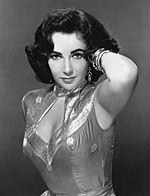
The 1950s saw the birth of the "teenager" as a distinct group. With rock and roll, youth fashion became very important. Teenagers started dressing differently from their parents, often wearing tight trousers and leather jackets.
New designers brought fresh ideas. Christian Dior created the famous "New Look" collection, which featured voluminous dresses and the "hourglass" shape for women. This style showed wealth and power. Dior helped re-establish Paris as a fashion capital.
Cristóbal Balenciaga was another important designer known for his unique shapes, like sack dresses and balloon skirts. He focused on color and texture and created new silhouettes for women.
Coco Chanel also made a comeback. Her style was known for being comfortable yet luxurious, often with pearl necklaces. She believed women needed clothes that showed their active roles in society after the war. The Chanel suit became a symbol of status for powerful women.
Sports Highlights
- Formula One: The first season of Formula One racing took place.
Olympic Games
- 1952 Summer Olympics held in Helsinki, Finland.
- 1952 Winter Olympics held in Oslo, Norway.
- 1956 Summer Olympics held in Melbourne, Australia.
- 1956 Winter Olympics held in Cortina d'Ampezzo, Italy.
FIFA World Cups
- 1950 FIFA World Cup: Hosted by Brazil, won by Uruguay.
- 1954 FIFA World Cup: Hosted by Switzerland, won by West Germany.
- 1958 FIFA World Cup: Hosted by Sweden, won by Brazil. This World Cup was notable for the debut of a then-unknown 17-year-old player named Pelé.
Images for kids
-
Israeli troops preparing for combat in the Sinai peninsula during the Suez Crisis.
-
The maximum territorial extent of countries under Soviet influence after the Cuban Revolution.
See also
 In Spanish: Años 1950 para niños
In Spanish: Años 1950 para niños


